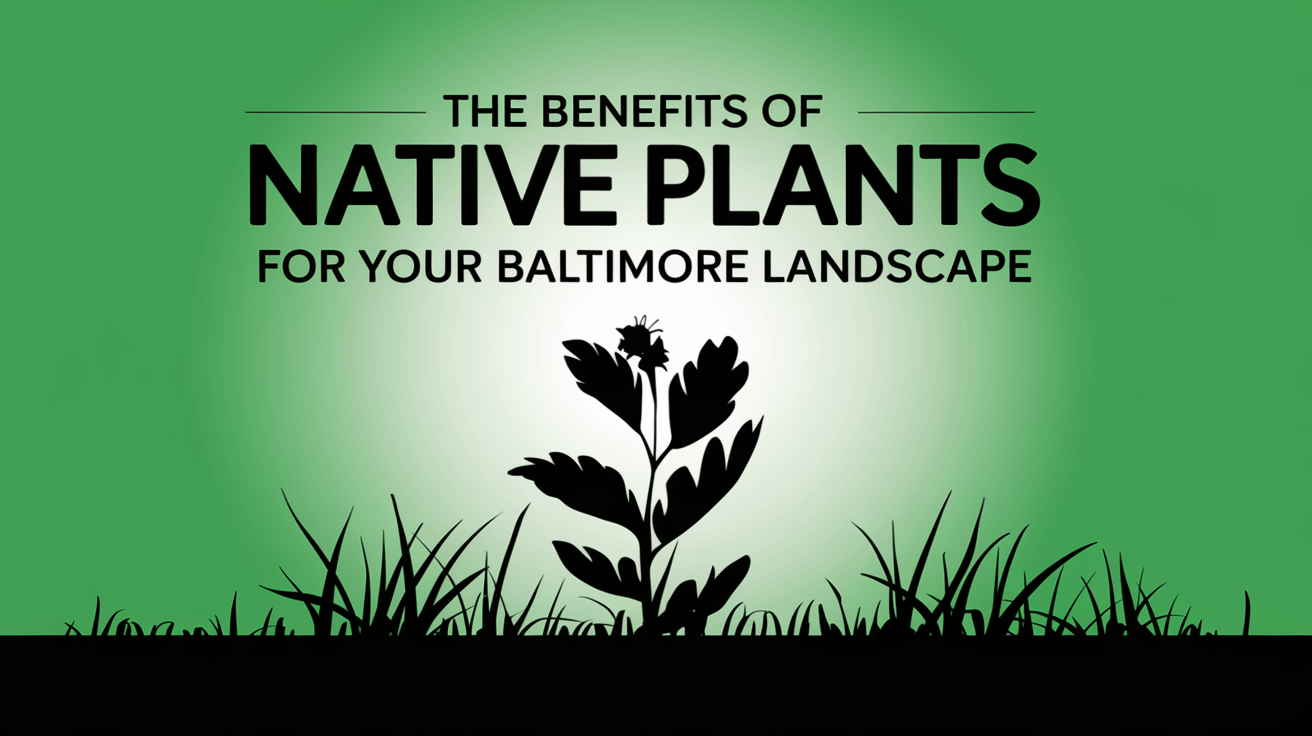When it comes to creating a beautiful, sustainable, and thriving landscape in Baltimore, native plants are a smart choice. These plants, which have evolved over time to adapt to the local climate, soil, and wildlife, offer a multitude of benefits for both your yard and the environment. In this article, we’ll explore five key advantages of incorporating native plants into your Baltimore landscape.

Benefit 1: Low Maintenance
One of the most significant benefits of native plants is their low maintenance requirements. Because these plants are naturally adapted to Baltimore’s growing conditions, they require less water, fertilizer, and pest control than non-native species. This means you can spend less time and money on upkeep and more time enjoying your outdoor space.
Some examples of low-maintenance native plants for Baltimore landscapes include:
- Black-eyed Susan (Rudbeckia fulgida)
- Purple Coneflower (Echinacea purpurea)
- Butterfly Weed (Asclepias tuberosa)
- Switchgrass (Panicum virgatum)
These plants are not only easy to care for but also add vibrant color and texture to your landscape. For more tips on creating a low-maintenance yard, check out our article on “How to Create a Low-Maintenance Landscape You’ll Love in Baltimore.”
Benefit 2: Water Conservation
Native plants are naturally adapted to Baltimore’s climate, which means they can thrive with less water than non-native species. By choosing native plants for your landscape, you can reduce your water usage and help conserve this precious resource.
To further reduce water consumption in your landscape, consider:
- Grouping plants with similar water needs together
- Using mulch to retain soil moisture and reduce evaporation
- Installing a rain barrel to collect and reuse rainwater for irrigation
- Choosing drought-tolerant native species like Little Bluestem (Schizachyrium scoparium) or Wild Bergamot (Monarda fistulosa)
By incorporating native plants and water-saving techniques, you can create a beautiful and sustainable landscape that requires less maintenance and resources.
Benefit 3: Supporting Local Wildlife
Native plants play a crucial role in supporting Baltimore’s local wildlife, including beneficial insects, birds, and other animals. These plants provide food, shelter, and nesting sites for a variety of species, helping to maintain the delicate balance of the ecosystem.
Some native plants that attract beneficial wildlife include:
- Milkweed (Asclepias spp.), which serves as a host plant for Monarch butterfly caterpillars
- Serviceberry (Amelanchier spp.), which provides food for birds and small mammals
- White Oak (Quercus alba), which supports hundreds of species of caterpillars, a vital food source for birds
By incorporating native plants that support local wildlife, you can create a landscape that not only looks beautiful but also contributes to the health and diversity of Baltimore’s ecosystem.
Benefit 4: Soil Health
Native plants have deep, extensive root systems that help to improve soil structure, increase organic matter, and prevent erosion. As these plants grow and decompose, they add nutrients to the soil, creating a healthier growing environment for all plants in your landscape.
To maintain and enhance soil health in your yard:
- Avoid excessive tilling, which can disrupt soil structure and beneficial organisms
- Use organic mulch, like leaf mold or wood chips, to retain moisture and suppress weeds
- Incorporate compost to improve soil fertility and texture
- Plant a diverse mix of native species to promote a healthy soil ecosystem
By prioritizing soil health, you can create a landscape that is more resilient, requires fewer inputs, and supports a thriving community of plants and wildlife.
Benefit 5: Aesthetic Appeal
Native plants not only offer practical benefits but also add unique beauty to your Baltimore landscape. With a diverse array of colors, textures, and forms, native plants can create stunning visual interest throughout the seasons.
Some design ideas for incorporating native plants into your landscape include:
- Creating a mixed border with a variety of native perennials, grasses, and shrubs
- Establishing a wildflower meadow for a naturalistic, low-maintenance look
- Using native groundcovers, like Wild Ginger (Asarum canadense) or Allegheny Pachysandra (Pachysandra procumbens), as an alternative to traditional lawns
- Incorporating native trees, like Red Maple (Acer rubrum) or American Hornbeam (Carpinus caroliniana), for shade and structure
By embracing the beauty of native plants, you can create a landscape that is both visually appealing and ecologically valuable.
Conclusion
Incorporating native plants into your Baltimore landscape offers a wide range of benefits, from low maintenance and water conservation to supporting local wildlife and improving soil health. By choosing these plants, you can create a beautiful, sustainable, and thriving outdoor space that contributes to the health of the environment.
To get started with native plants, visit local nurseries and garden centers that specialize in native species. These experts can help you select the right plants for your specific growing conditions and design goals. By making the switch to native plants, you’ll be taking an important step towards creating a landscape that is both beautiful and beneficial for years to come.

